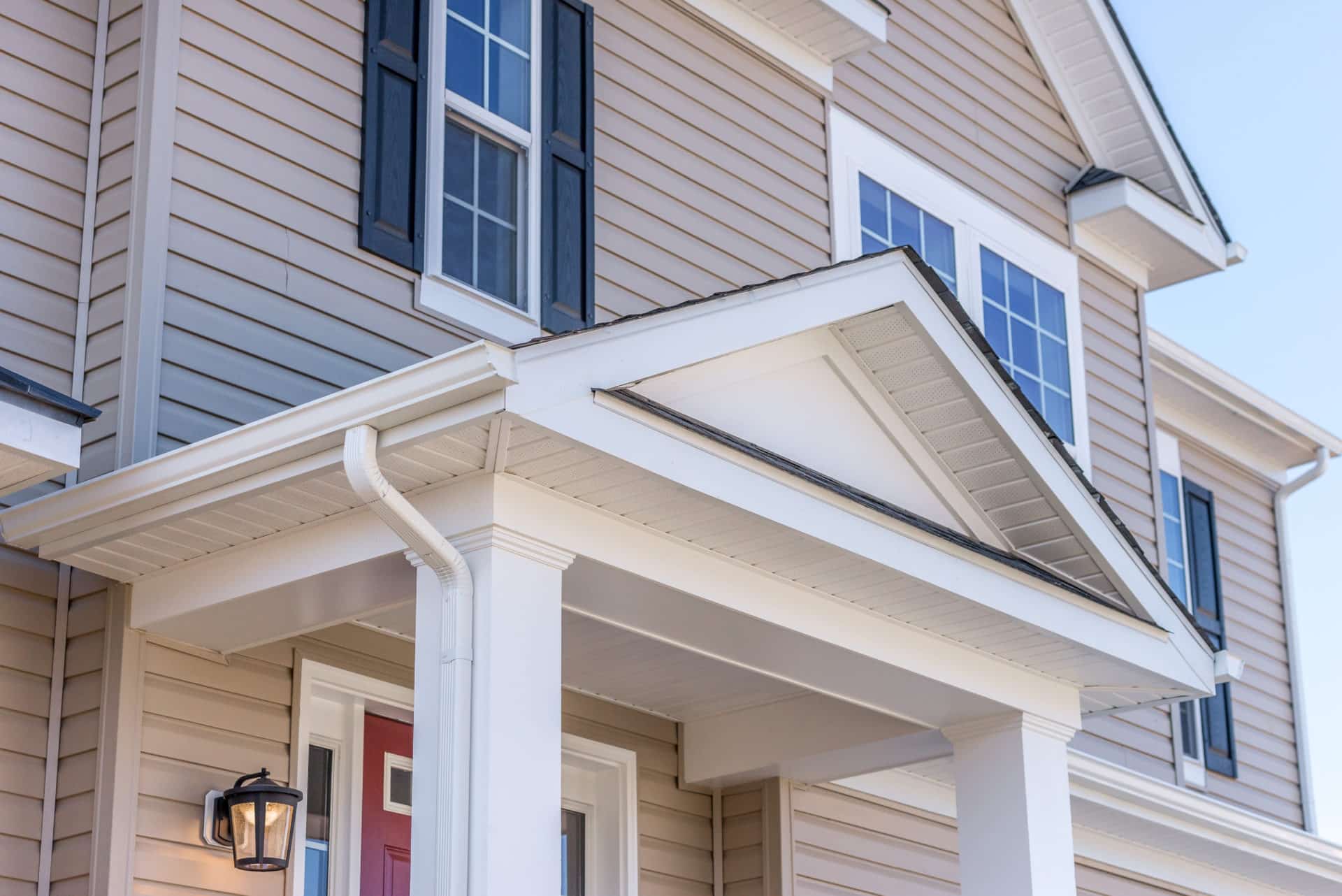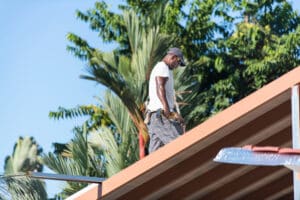Exterior trim visually draws your home together, but it serves a purpose beyond the aesthetic. It seals out moisture and unwanted pests while preventing mold and mildew from permeating your house. When deciding on how to adorn and finish your building project, you may encounter many different styles and materials for composite trims—each boasting a different purpose and strong point.
Continue reading to learn about trim, siding, and molding to help create the best version of your home.
What Is Exterior Composite Trim?
Exterior composite trim is a mixture of wood and other materials. It can be cut, drilled, and sanded the same way as wood, but is more durable. Most composite materials can also be finished with a convincing wood grain, and are available in a variety of colors.
Composite materials commonly used with wood include plastic, cellular PVC, vinyl, and polyurethane, all of which are weather and rot-resistant.
What Is Fascia Trim?
Fascia is a style of trim that is installed directly below the roofline to keep moisture from entering the roof and interior of your house while supporting the bottom row of tiles and slates.
It’s generally a bit thicker and wider than the trim used on the rest of the house, and the dimensions of the trim will vary with the architecture you are working around. Wood is the most common fascia trim material, but composite trim can also be used with great success.
Manufacturers now synthesize fascia trim in various building materials. These materials include:
- Fiber-cement and composite fascia boards
- Vinyl fascia covers
- Aluminum fascia covers
Home Exterior Trim Anatomy
The materials in exterior trim all help seal your house off from moisture and pests. Each style of exterior trim may serve a different mechanical or aesthetic purpose, and can be made of any standard composite trim materials.
Exterior Cladding
Cladding is siding that covers your exterior walls. It’s used to highlight entryways and add details to porch ceilings. Cladding protects the exterior of the structure and protects it from the elements. This type of exterior trim acts as a protective external layer on whatever it’s applied to.
Wood siding and composite materials are popular, but other materials that can be used for cladding include:
- Capped polymer
- Aluminum
- Vinyl
- Brick rendering
- Corium
- Fiber cement
- Prefinished fiber
- Cement panels
- Natural stone
- Metal
Trim
Trim finishes seams around windows and doors to keep out the cold and the wind, so trim needs to be made of weather-resistant materials. Wooden trims are often made from cedar or redwood because both are moisture and insect-resistant.
Exterior trim varieties:
- Fascia
- Frieze
- Rake
- Barge
- Soffit
- Boxed
- Gutters
Molding
Molding, or millwork, is primarily decoration.
Molding is more elaborate and can be made of:
- Solid wood
- Engineered wood
- Fiber Cement
- Plastic composite
- Preservative-treated wood products
Soffit
Soffit is the material between eaves where the fascia and gutters are placed. Roofs without overhangs don’t have soffits.
It’s a passive ventilation system for your attic that keeps warm moisture from saturating the air and creating mold.
Soffit effectively ventilates your attic, as it allows for constant ventilation. Consistent air rotation is essential to your home’s well-being. Ventilation draws heat and moisture from the house and keeps pests out of your walls.
Fascia
Fascia is a long straight board along the lower edge of the roof connecting the ends of the rafters and trusses.
Mounted where the roof meets the outer walls, fascia supports the lower edge of the bottom row of tiles.
Fascia has three primary functions:
- Keeping out moisture
- Keeping out pests
- Helping ventilation flow through the attic
Fascia trim is traditionally made of vinyl, but other flexible, weather-resistant materials such as plastic and aluminum are also available.
Deck Fascia
Deck fascia is the board running around the edge of a deck. This material covers the wood perimeter joist and is called a rim joist cover. Deck fascia is primarily aesthetic and hides the joists.
This trim is made of pressure-treated, rot-resistant wood or PVC. Deck fascia is a great option for composite materials, as you want something that will match or complement the rest of your deck. You also want it to be durable and weather-resistant, which wood composite materials are ideal for.
Picture Framed Deck Fascia
Picture framing a deck means installing a trim board around the border of the deck. Traditional deck design allows dirt and grime to get trapped between the end of the deck boards and the decorative fascia board. This trapped debris ferments and rots, turning into mold and mildew and severely shortening the lifespan of your deck.
Picture framing a deck helps eliminate debris because the overhang covers the rim joist and the fascia, blocking dirt and detritus from making their way in between and causing complications.
Benefits For Your Home
Many different components contribute to the exterior trim of a home. Each serves a function, and all work in tandem to keep moisture, rot, and pests from invading your home. Exterior composite trims made of weather and decay-resistant materials add to the structural integrity by protecting it, as well as making the overall image of the build more attractive.
Some popular trim ideas can include:
- A complimentary fascia trim polishes your home and gives it a refined, finished look.
- To recreate a woodland A-frame home’s look, use a natural color palette for your deck and home complementary to the landscape.
- Match richly-hued fascia boards with decking to complement the dark tones of your home’s fascia.
- Use PVC as deck skirting and fascia to create a finish that ties to your house’s whitewash finish.
- Column wraps provide an elegant and sophisticated appearance.
Conclusion
The styles of trim used on a building can have a huge impact on the longevity of the structure, how weatherproof and watertight it is, and how good it looks as a finished product. Using weather-resistant composite trim such as Azek can add years of life to your building project.
Our expert team at Harbor Exports are at the ready to make sure you can acquire all of the top-quality materials and accessories you may need, wherever you need them. Contact us today to get started.
- About the Author
- Recent Posts
Brad Enfinger has been in construction for over 20 years and has been involved with every material from concrete slab to laying the roof on houses. Brad’s diverse experience has given him the knowledge needed to assist those with shipping building materials, whether it be a house, pole barn, deck, or a dock. Brad at Harbor Exports has anything for your building material needs and can export material all over the world.




